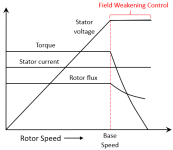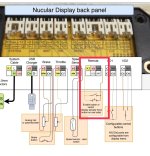Powervelocity.com said:
Other things to remember are increased risks of the whole system's catastrophic failure when operating in the FW region. A controller faulting or even resetting with motor operating within the base speed would be uneventful most of the time.
In my understanding, in the Nuculars implementation of field weakening, the BEMF is not allowed to increase above the voltage limitations of the controller (i.e. max allowable motor speed is basically the peak unloaded speed). So there will be no catastrophic failure.
Oh, and along those lines:
BAC failures: 1,738,583 (or thereabouts)
Nucular failures: 0 (actually if I recall correctly, I think there was 1 failure reported, but the user admitted fault).
Let that sink in.
Powervelocity.com said:
You also want to to take into account the motor construction. Most motors used on ebikes, such as hub motors, etc. are SPM motors where field weakening will perform poorly or will not work at all.
Out of all the people using the Nucular controller, I haven't heard reports of problems. Mine works perfectly fine on a MXUS 3k4T. "Poorly or not at all" is just not true.
Powervelocity.com said:
Above the base speed RPMs, the torque drops rapidly as seen on the graph below.
That graph is not indicative of a real ebike setup at all. A torque curve will never be flat for the full range of rpm and then suddenly drop off. There are so many other limiting factors (controller current limit, battery current limit, back EMF vs battery voltage), so torque is usually ramping down almost immediately at low rpm (well below the "base speed"). Without field weakening, top speed is never equal to unloaded speed of the motor (that would be physically impossible), so field weakening can be applied at a much lower rpm than shown in your graph, and torque can be increased over a relatively wide and useable rpm, well below the unloaded speed.
Powervelocity.com said:
but you have to account for a significant torque drop. On a vehicle that would translate to loss of that agility.
Again, the torque curve is not flat all the way through the speed range like you depicted, so saying that field weakening will have significantly reduced torque ("loss of agility") is a complete exaggeration, and you're not comparing real world conditions.
IMO, I think just about your entire post is disingenuous.




